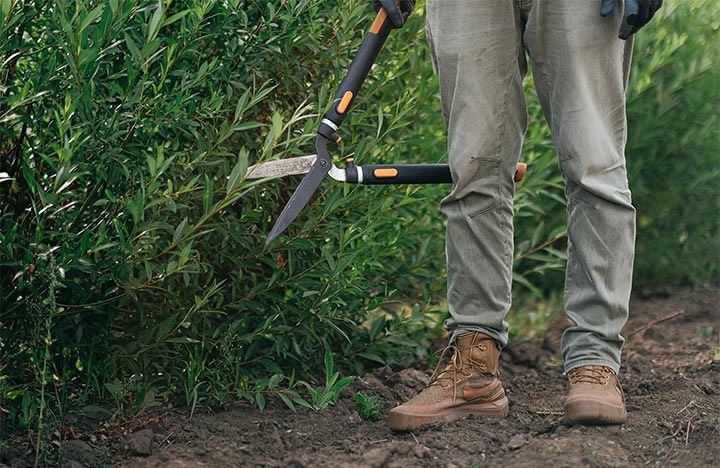The ultimate guide on how to prune shrubs & other plants
For many gardeners the thought of pruning a plant causes stress and doubt. When is the right time to prune? How much should I prune? What do I prune? Can someone tell me how to prune all these plants? These are all the questions that jostle for answers as you look at your garden, secateurs in hand.
The first rule of pruning is don’t panic! The second rule is understand why you are pruning. If you follow these two rules, you’ll be able to prune with confidence.
Why and when to prune?
Pruning is done to shape a plant, remove dead growth and to encourage new growth and flowers.
Shaping and removing dead growth can be done throughout the year as needed. Shaping can be removing growth that’s growing in the wrong place (such as a stem that’s growing into another plant or another branch on the same plant), removing low or wayward growth or removing inward facing branches.
Plant shaping can also include pruning that’s done to form a hedge, topiary, standard or espalier.
Pruning to encourage new growth is usually done after flowering (or fruiting if the plant is productive). Pruning after a plant has flowered eliminates the risk of pruning at the wrong time and accidently cutting off the branches that were about to flower!
Dormant plants that flower on new wood, especially roses and hydrangeas, are often pruned in winter when they’ve dropped their leaves and before they begin to regrow.
How much?
The amount that’s pruned away varies depending on the plant and the reason it is being pruned but as a good rule of thumb don’t prune a woody plant by more than a third of its overall growth at any one time. Herbaceous perennials can be happily cut to the ground to regenerate.
Much of the pruning gardeners do on a regular basis is removing just small amounts of growth. Deadheading (that is pruning off dead flowers) simply removes spent blooms. Tip pruning, which is nipping out the growing tip, encourages bushy growth. Annuals and hedging plants are good subjects to tip prune to get a bushier plant.
A much harder prune is done to regenerate a plant or to encourage lots of new growth from its base. Hard pruning is successful when plants can regrow from old growth or readily produce new growth from their base. Occasionally hard pruning can kill a plant (lavenders, daisies and most conifers do not respond well to hard pruning). To check how a plant responds, cut back part of it and watch how it regrows.
Where to cut
Cutting a plant encourages new growth, so cut back to just above a node (a growth point on the stem). After you’ve pruned, check back to watch the new growth appearing. When plants are actively growing (spring to early autumn) new growth appears within weeks of pruning. Avoid pruning plants that are frost tender in late autumn or winter as the resulting new growth may be damaged by the cold.
As pruning encourages new growth it is important to feed and water plants that have been pruned. Keep supplying regular water as the new growth develops.
Pruning tools
Pruning is done using clean sharp secateurs on small growth. Thicker growth (usually above 20-25mm in diameter) that is too large for secateurs can be done with pruning shears or a pruning saw. Where there is lots of material to prune – for example a hedge – use shears or a powered pruner. To prune difficult-to-reach growth, use a pole pruner. To avoid spreading disease it is a good habit to wipe blades with disinfectant such as Dettol or tea tree oil. Click here to read more about the best pruning tools.


